Book chapter
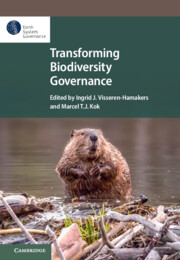
Emerging Technologies in Biodiversity Governance: Gaps and Opportunities for Action
Emerging technologies potentially have far-reaching impacts on the conservation, as well as the sustainable and equitable use, of biodiversity. Simultaneously, biodiversity itself increasingly serves as an input or source material for novel technological applications. In this chapter, we assess the relationship between the regime of the Convention on Biological Diversity (CBD, or “the Convention”) and the governance of three sets of emerging technologies: geoengineering, synthetic biology and gene drives, as well as bioinformatics. The linkages between biodiversity and technology go beyond these cases, with, for example, geographic information systems, satellite imagery or possibly even blockchain technology playing potentially important roles for implementing the CBD’s objectives. Here, however, we focus on technologies that have been subject to extensive debate and rulemaking activity under the CBD.
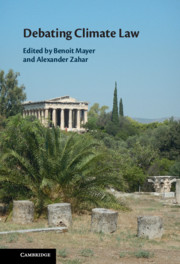
Solar Geoengineering Could Be Consistent with International Law
Besides emissions reductions, CDR, and adaptation, the only remaining means to limit climate change impacts is solar geoengineering. While it could greatly reduce climate change, including in ways that the other responses cannot, solar geoengineering also poses serious environmental risks and social challenges. For these reasons, it has been controversial, including with respect to international law. In this chapter, I advocate a forceful case that the global testing or deployment of solar geoengineering could be consistent with international law. I secondarily argue that international law even encourages it. To be clear, the fact that solar geoengineering could be consistent with international law does not mean that it necessarily would be. Like all other activities of significant scale, it could be conducted in ways that would be contrary to international law.
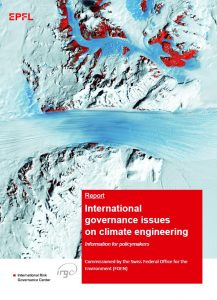
Elements and Steps for Global Governance
This chapter evaluates possible options and approaches for potential future regimes on the international governance of climate engineering. Developing international governance of CDR and SRM – especially in case of their large-scale use – will be a long process across several decades. However, meaningful steps may need to be taken soon to lay a foundation for this lengthy, uncertain process. Furthermore, some shorter-term international governance actions – including of CDR’s and SRM’s research – could be beneficial.
The chapter offers explicit criteria for the assessment of governance options, including to reduce climate change and its impacts, contribute to sustainable development, support greenhouse gas emissions reductions, establish and maintain legitimacy, foster peace and stable international relations, and reflect current knowledge and adapt to changing conditions.
Possible governance sites – including but not limited to intergovernmental institutions – are then discussed. Among possible candidates, it is difficult to imagine the international governance of CDR and SRM without the climate change regime having a central role. Because the IPCC aims to be neutral with respect to policy, it can and should contribute to, but not take the lead in governance. The biodiversity regime is well-positioned to legitimately contribute to international governance that prioritizes sustainable development and poverty eradication, although its governance would largely be limited to that concerning impacts on biodiversity. Notably, UNEP’s mandate and capabilities include identifying emerging issues, conducting scientific reviews, and catalyzing international governance across issue areas and sectors. The creation of de-novo international process and decentralized governance should also be considered.
The chapter suggests possible substantive options for governance, which are to facilitate research; encourage the responsible use of CDR; regulate risks for sustainable development; further integrate with existing governance; build governance capacity; strengthen international cooperation; leverage the private sector; implement breakpoints, stage gates and moratoria; and establish a foundation for future decision-making.
The chapter closes with six specific recommendations:
- to distinguish between CDR and SRM as well as among the diverse CDR techniques in their additional dedicated governance;
- to accelerate authoritative, comprehensive, and international scientific assessment;
- to encourage the research, development, and responsible use of some CDR techniques;
- to help build capacity for evaluating CDR and SRM in some of those countries that lack the resources to do so
- to facilitate the elaboration and implementation of non-state governance; and
- to explore potential further governance of SRM while remaining agnostic concerning its ultimate use.

Governing Experimental Responses: Negative Emissions Technologies and Solar Climate Engineering
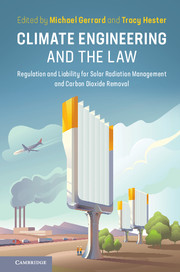
International Law

The International Legal Framework for Climate Engineering

Why UNFCCC and CBD Should Refrain from Regulating SRM

Solar Climate Engineering, Law, and Regulation
Solar climate engineering—intentional modification of the planet’s reflectivity—is coming under increasing consideration as a means to counter climate change. At present, it offers the possibility of greatly reducing climate risks, but would pose physical and social risks of its own. This chapter offers an introduction to solar climate engineering, and explores its potential, risks, and legal and regulatory challenges. It also contextualizes these proposals with respect to other emerging technologies and the broader socio-political milieu. The chapter discusses the contours of existing and potential regulation, particularly at the international level. These aspects include regulatory rationales, diverse characteristics of proposed regulatory regimes, difficulties in defining the regulatory target, and the management of uncertainty through precaution. The chapter closes with suggested future research directions in the law and regulation of solar climate engineering.

Climate Engineering and International Law
In the face of dire forecasts of climate change and disappointing emissions abatement, some scientists and others are increasingly suggesting and researching intentional, large-scale interventions in natural systems in order to counteract climate change. These ‘climate engineering’ or ‘geoengineering’ proposals presently appear to hold the potential to significantly reduce the risks from climate change, but they also would pose environmental and social risks and would raise numerous legal questions, particularly at the international level. After introducing climate engineering, this chapter suggests why climate engineering is challenging for international environmental law and its scholars, briefly describes applicable international legal instruments and reviews the existing legal scholarship on the international environmental law of climate engineering, with particular attention to proposals for future international regulation. It closes with suggestions for future research.
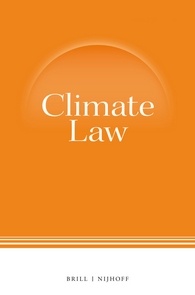
An Economic Analysis of Liability and Compensation for Harm from Large-Scale Solar Climate Engineering Field Research
Solar climate engineering is under increasing consideration as a potential means to reduce climate change risks. Its field research may generate knowledge to reduce climate risks to humans and the environment and will, at a large-enough scale, pose its own risks, some of which will be of the transboundary kind. Liability or compensation for harm is frequently referenced as a possible component of international regulation of solar climate engineering but has been insufficiently developed. This article offers an economic analysis of the possible interrelated roles of rules, liability, and compensation in the future international regulation of large-scale field research in solar climate engineering. Notably, the benefits, risks, and incentives of climate-engineering research are unlike typical high-risk activities. The analysis proposes a hypothetical international agreement that links general and procedural rules for research, an international compensation fund, and limited, indirect state liability with a duty-of-care defence.
Reprinted in Environmental Law and Economics, Klaus Mathis (Ed.), Economic Analysis of Law in European Legal Scholarship series (Springer, 2017).
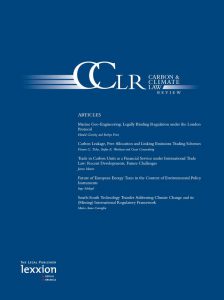
Climate Engineering Research: A Precautionary Response to Climate Change?
In the face of dire forecasts for anthropogenic climate change, climate engineering is increasingly discussed as a possible additional set of responses to reduce climate change’s threat. These proposals have been controversial, in part because they – like climate change itself – pose uncertain risks to the environment and human well-being. Under these challenging circumstances of potential catastrophe and risk-risk trade-off, it is initially unclear to what extent precaution is applicable. We examine what precaution is and is not, and make a prima facie case that climate engineering may provide means to reduce climate risks. When precaution is applied to the currently pertinent matter of small to moderate scale climate engineering field tests, we conclude that precaution encourages them, despite their potential risks.
Reprinted in Environmental Law and Climate Change, Jonathan Verschuuren (Ed.), The International Library of Law and the Environment series (Edward Elgar, 2015).
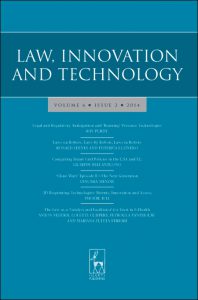
The Regulation of Climate Engineering
Intentional interventions in global physical, chemical, and biological systems on a massive scale are receiving increasing attention in hopes of reducing the threat of anthropogenic climate change. Known as climate engineering, or geoengineering, research is moving forward, but regulation remains inadequate, due in part to significant regulatory challenges. This essay asserts that key to overcoming these regulatory challenges is distinguishing between the two primary forms of climate engineering, and between deployment and research. One of climate engineering’s two primary forms, carbon dioxide removal, can largely be addressed through existing legal instruments. In the case of solar radiation management, the other primary form, focusing initially on research can bypass the geopolitical quagmire of deployment. Two other major challenges to developing regulation for solar radiation management research remain: establishing regulatory legitimacy, and developing an appropriate definition of research. Potential regulatory forms include centralized international legal instruments, fully or partially private transnational networks, and norms developed from the bottom up.
Reprinted in Environmental Law and Climate Change, Jonathan Verschuuren (Ed.), The International Library of Law and the Environment series (Edward Elgar, 2015).
